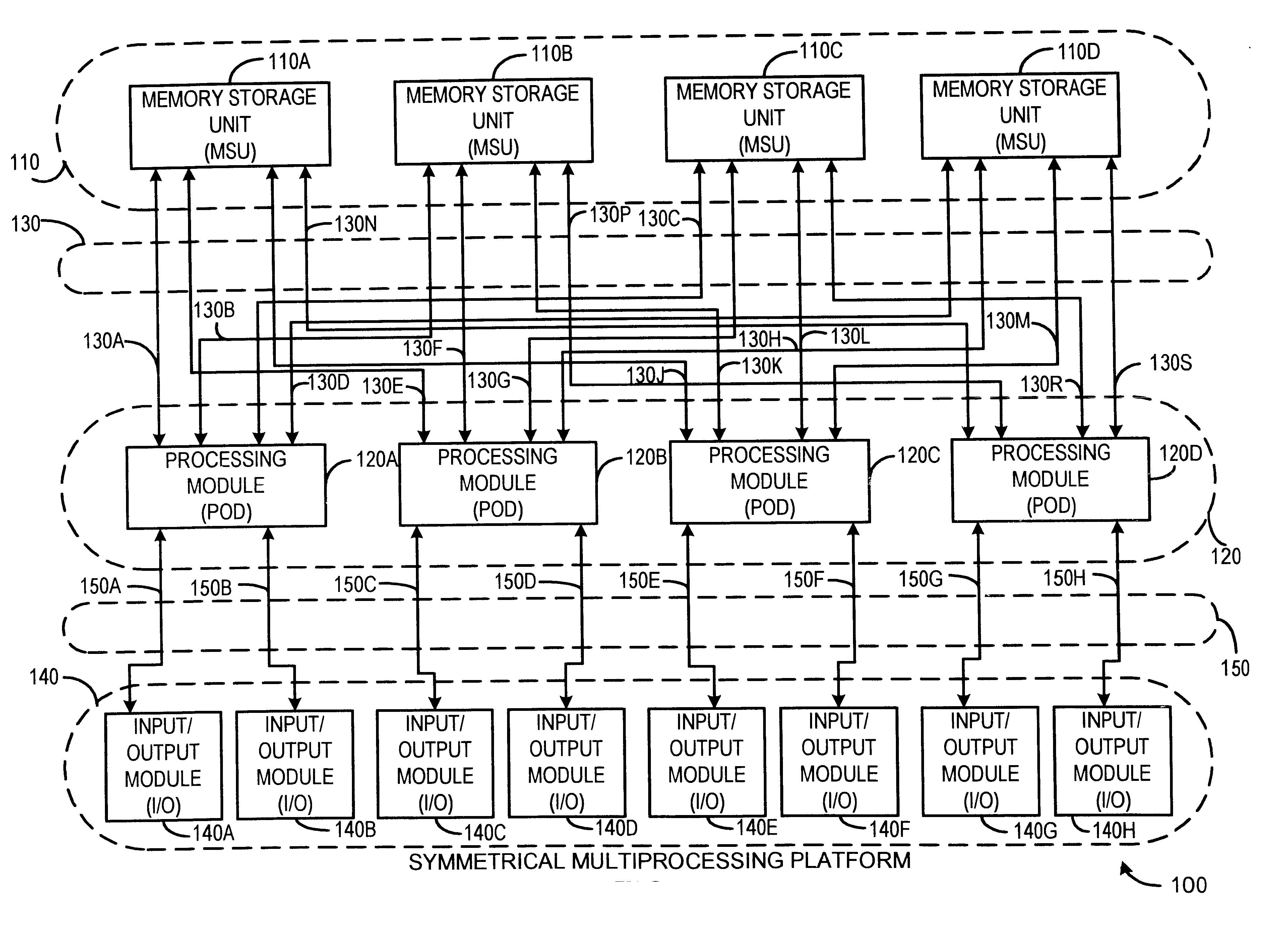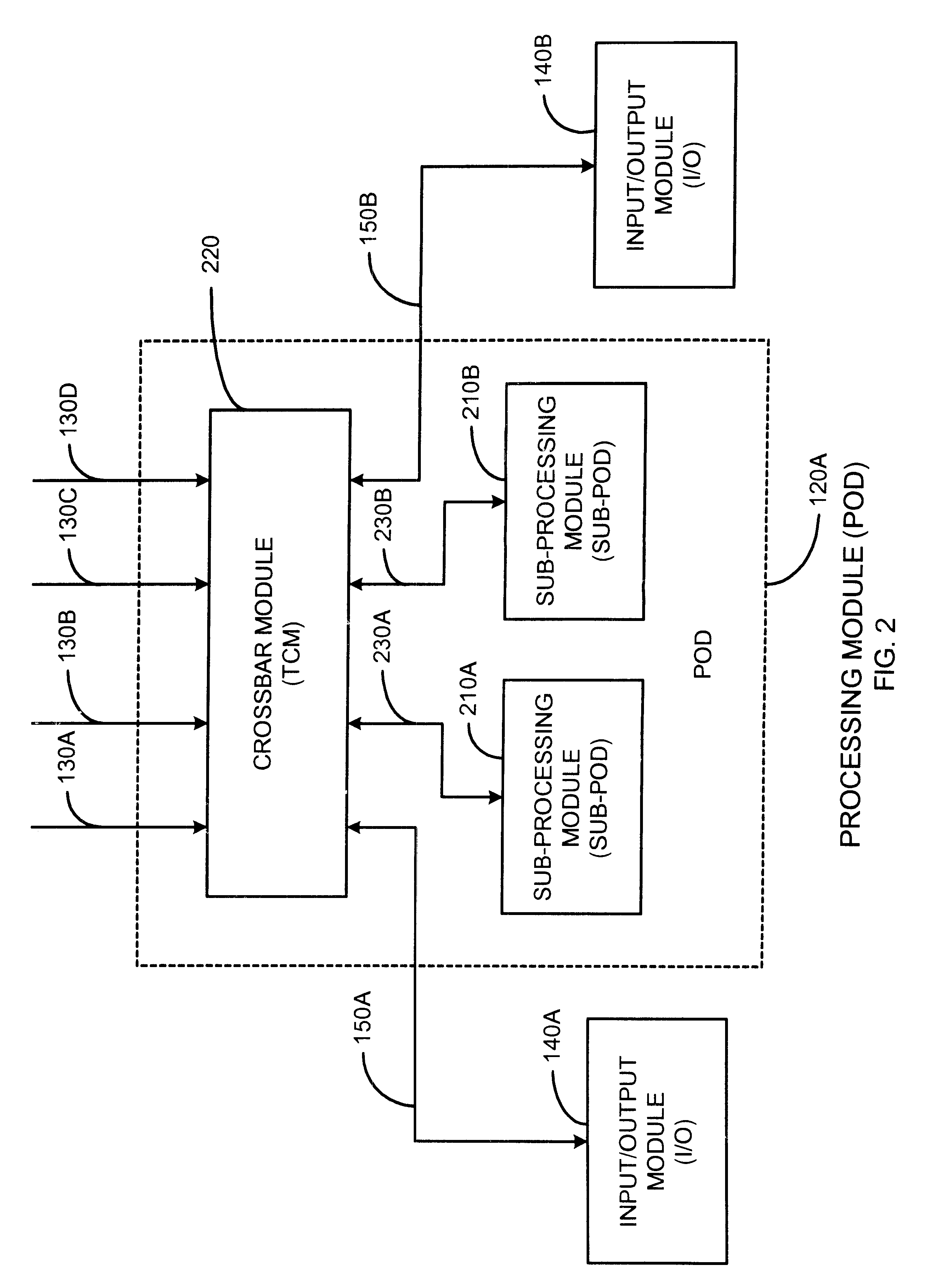High-speed memory storage unit for a multiprocessor system having integrated directory and data storage subsystems
a multiprocessor system and data storage technology, applied in the field of memory units, can solve the problems of increasing complexity of data processing systems, increasing the cost of memory storage, and increasing the complexity of processors, so as to achieve less complex overall memory design, less expensive design, construction, and testing.
- Summary
- Abstract
- Description
- Claims
- Application Information
AI Technical Summary
Benefits of technology
Problems solved by technology
Method used
Image
Examples
Embodiment Construction
System Platform
FIG. 1 is a block diagram of a Symmetrical Multi-Processor (SMP) System Platform according to a preferred embodiment of the present invention. System Platform 100 includes one or more Memory Storage Units (MSUs) in dashed block 110 individually shown as MSU 110A, MSU 110B, MSU 110C and MSU 110D, and one or more Processing Modules (PODs) in dashed block 120 individually shown as POD 120A, POD 120B, POD 120C, and POD 120D. Each unit in MSU 110 is interfaced to all units in POD 120 via a dedicated, point-to-point connection referred to as an MSU Interface (MI) in dashed block 130, individually shown as 130A through 130S. For example, MI 130A interfaces POD 120A to MSU 110A, NE 130B interfaces POD 120A to MSU 110B, MI 130C interfaces POD 120A to MSU 110C, MI 130D interfaces POD 120A to MSU 110D, and so on.
In one embodiment of the present invention, MI 130 comprises separate bi-directional data and bi-directional address / command interconnections, and further includes unidi...
PUM
 Login to View More
Login to View More Abstract
Description
Claims
Application Information
 Login to View More
Login to View More - R&D
- Intellectual Property
- Life Sciences
- Materials
- Tech Scout
- Unparalleled Data Quality
- Higher Quality Content
- 60% Fewer Hallucinations
Browse by: Latest US Patents, China's latest patents, Technical Efficacy Thesaurus, Application Domain, Technology Topic, Popular Technical Reports.
© 2025 PatSnap. All rights reserved.Legal|Privacy policy|Modern Slavery Act Transparency Statement|Sitemap|About US| Contact US: help@patsnap.com



